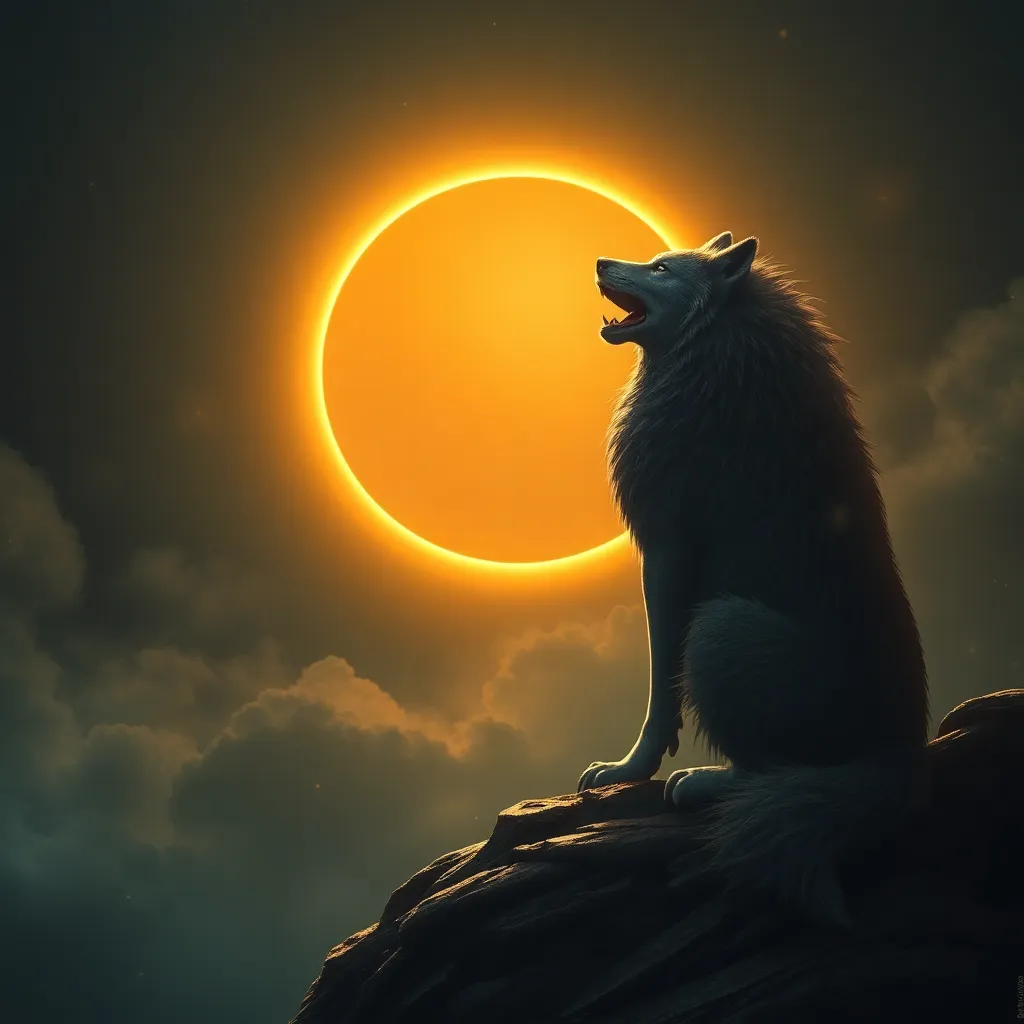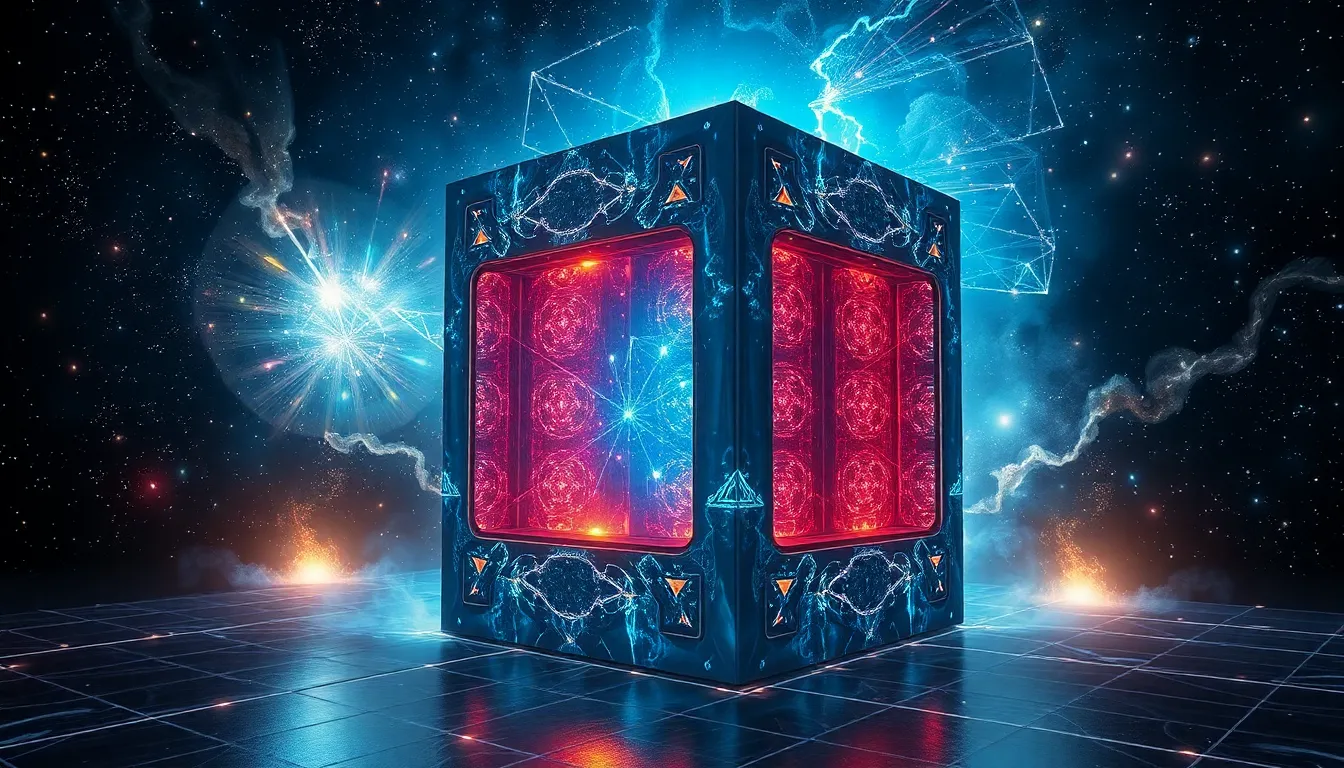Fenrir and the Sun: The Wolf’s Role in the Eclipse and Other Celestial Events
I. Introduction
In Norse mythology, Fenrir is a monstrous wolf whose significance transcends simple storytelling. His narrative is deeply woven into the fabric of the cosmos, linking the natural world with the divine. Fenrir’s story is not only a tale of chaos and destruction but also a reflection of the ancient Norse understanding of celestial events, particularly eclipses.
Celestial events, such as solar and lunar eclipses, held immense significance for ancient cultures. They were often interpreted as omens, signs from the gods, or manifestations of cosmic battles. This article aims to explore Fenrir’s connection to these celestial phenomena, particularly his role in eclipses and other related events.
II. The Mythological Background of Fenrir
A. Fenrir’s origins and family lineage
Fenrir is the offspring of Loki, the trickster god, and the giantess Angerboda. He is part of a significant lineage that includes the serpent Jörmungandr and Hel, the goddess of the underworld. This family connection establishes Fenrir as a being with immense power and a connection to chaos.
B. Prophecies surrounding Fenrir’s role in Ragnarok
According to the prophecies, Fenrir is destined to play a crucial role during Ragnarok, the end of the world in Norse mythology. It is foretold that he will break free from his bindings and devour Odin, the chief of the gods, marking a pivotal moment in the cosmic struggle between order and chaos.
C. Symbolism of Fenrir as a force of chaos and nature
Fenrir embodies the primal forces of nature and chaos. His immense size and strength symbolize the unpredictable and often destructive forces found in the natural world. This chaos is essential for renewal, as it paves the way for new beginnings, a theme that resonates deeply within Norse mythology.
III. Eclipses in Norse Mythology
A. Historical context of solar and lunar eclipses
During the Viking Age, eclipses were often seen as significant omens. Norse societies, like many ancient cultures, lacked a scientific understanding of these celestial events. Instead, they interpreted them through the lens of myth and legend, attributing them to the actions of gods and mythical creatures.
B. Cultural interpretations of eclipses in Norse society
In Norse culture, a solar eclipse was often viewed as the sun being swallowed by a wolf. This idea is embodied in the myth of Sköll and Hati, two wolves who chase the sun and the moon, respectively. When they succeed in their pursuit and the sun or moon disappears, it is a moment of great dread.
C. Fenrir’s association with eclipses: The myth of swallowing the sun
Fenrir’s association with eclipses is particularly poignant in the myth of the wolf swallowing the sun. This act symbolizes a time of darkness and chaos, reflecting the fear and reverence that ancient peoples had for celestial events. Eclipses were seen as a temporary triumph of chaos over order, a theme that resonates with Fenrir’s role in Ragnarok.
IV. Fenrir’s Role in Celestial Events
A. Analysis of Fenrir as a metaphor for cosmic forces
Fenrir’s character serves as a metaphor for the unpredictable and often violent forces of the cosmos. His eventual rise during Ragnarok signifies the inevitability of chaos and the cyclical nature of destruction and renewal. Just as eclipses are fleeting moments of darkness, Fenrir’s influence is both transient and transformative.
B. Other celestial events linked to Fenrir
- The wolf chasing the sun and moon, representing the eternal struggle between light and darkness.
- Fenrir’s role in the cosmic battle during Ragnarok, where celestial bodies align with the fate of gods.
- The symbolism of wolves in Norse mythology, often linked to the wilderness and the unknown.
C. The duality of Fenrir as both a destroyer and a harbinger of renewal
While Fenrir is often viewed as a harbinger of doom, his role also signifies potential for renewal. The destruction he brings during Ragnarok is not the end but rather a prelude to rebirth and regeneration. This duality reflects the natural cycles observed in the cosmos, where destruction is often a precursor to new life.
V. The Symbolism of the Wolf in Mythology
A. The wolf as a symbol in various cultures
The wolf has been a prominent symbol across various cultures, often representing loyalty, strength, and the untamed aspects of nature. In many mythologies, wolves are seen as guardians, teachers, or even tricksters. Their association with celestial events deepens their symbolic significance, linking them to the mysteries of existence.
B. Comparison of Fenrir with other mythological wolves
Fenrir is not alone in the mythological realm; other cultures have their own wolf figures. For example:
- Roman mythology: The she-wolf that nursed Romulus and Remus symbolizes nurturing and civilization.
- Native American mythology: Wolves are often seen as spirit guides, embodying instincts and survival.
- Chinese mythology: The wolf represents a fierce protector, often associated with loyalty and bravery.
C. The significance of wolves in relation to celestial themes
The wolf’s association with the night and hunting further connects it to celestial themes, as they are creatures of the dark, often howling at the moon. This nocturnal behavior resonates with the themes of eclipses and the eternal struggle between light and darkness.
VI. Modern Interpretations and Cultural References
A. Fenrir’s influence on contemporary literature and media
In recent years, Fenrir has inspired a wide range of literature, films, and video games. His character often embodies themes of rebellion, chaos, and the struggle against oppression. Modern interpretations frequently explore the complexities of his nature, presenting him as both a villain and a misunderstood creature.
B. The resurgence of interest in Norse mythology
With the rise of fantasy genres and the popularity of Norse mythology, Fenrir has become a symbol of cultural identity and heritage. This resurgence has sparked a renewed interest in understanding the significance of celestial events in ancient beliefs.
C. Eclipses and their portrayal in modern storytelling
Contemporary storytelling often uses eclipses as metaphors for change, conflict, and transformation. They serve as pivotal moments in narratives, much like Fenrir’s role in Norse mythology, illustrating how ancient themes continue to resonate in modern contexts.
VII. Scientific Perspectives on Eclipses
A. Explanation of how solar and lunar eclipses occur
A solar eclipse occurs when the moon passes between the Earth and the sun, blocking the sun’s light. Conversely, a lunar eclipse happens when the Earth is positioned between the sun and the moon, casting a shadow on the moon. Understanding these celestial mechanics allows us to appreciate the scientific reality behind the myths.
B. The intersection of mythology and astronomy
The intersection of mythology and astronomy illustrates how ancient peoples used storytelling to explain and make sense of the natural world. Eclipses, once mysterious and frightening, are now understood through the lens of science, yet their mythological significance remains culturally relevant.
C. The importance of celestial events in understanding ancient beliefs
Celestial events were critical to ancient societies, influencing their calendars, agriculture, and religious practices. Eclipses, in particular, served as powerful reminders of humanity’s relationship with the cosmos, reflecting the blend of fear, respect, and curiosity towards the universe.
VIII. Conclusion
Fenrir’s role in Norse mythology is intricately connected to celestial events, particularly eclipses. Through the lens of myth, we see the wolf as a powerful symbol of chaos, destruction, and renewal. His influence extends beyond ancient tales, resonating in modern interpretations and cultural references.
The enduring legacy of Norse mythology invites us to reflect on the interplay between myth and reality in understanding celestial phenomena. Fenrir’s narrative reminds us that chaos is an integral part of existence, shaping both the cosmos and the human experience.



